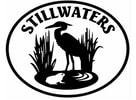Mammals
Mammals may be the most well studied group of organisms on the planet (which may be due to the fact that we humans are mammals). What distinguishes mammals from other animals includes a few characteristics: having a “neocortex” (which generally controls the senses, movement, spatial reasoning, and language), hair, and mammary glands (the glands that produce and give off milk to feed offspring). Most mammals give birth to live young (instead of laying eggs), but there are a few species that do.
Different species of mammals have evolved to live in different places. A majority of mammals live on land, although some are aquatic and some are aerial, and a few are “fossorial” (live underground). Of the land mammals, many live in trees and have larger limbs (and occasionally tails) to help them get from tree to tree. The primary species of aerial mammals is the bat. They differ from birds by having thinner wings that contain more bones, but this allows them to move through the air more precisely or accurately. Aquatic mammals include whales and dolphins (among others), most of which have a dorsal fin that helps keep them from turning upside down.
Often, mammals will utilize vocal communication to transfer information, partake in mating rituals, or even just for social purposes. Sociality differs between mammal species, wherein several are highly social (to the point of even caring for the offspring of other individuals in the species) and some are solitary, allowing them more access to food and other resources with a lowered risk of being seen by predators or prey.
Relative to other groups, mammals in general have longer lifespans and more care for offspring, though this isn’t true for all species. There is also thought to be a higher capability of learning in mammals, but it’s only for certain mammal species (and there are other species, like crows, that are quite resourceful).
Different species of mammals have evolved to live in different places. A majority of mammals live on land, although some are aquatic and some are aerial, and a few are “fossorial” (live underground). Of the land mammals, many live in trees and have larger limbs (and occasionally tails) to help them get from tree to tree. The primary species of aerial mammals is the bat. They differ from birds by having thinner wings that contain more bones, but this allows them to move through the air more precisely or accurately. Aquatic mammals include whales and dolphins (among others), most of which have a dorsal fin that helps keep them from turning upside down.
Often, mammals will utilize vocal communication to transfer information, partake in mating rituals, or even just for social purposes. Sociality differs between mammal species, wherein several are highly social (to the point of even caring for the offspring of other individuals in the species) and some are solitary, allowing them more access to food and other resources with a lowered risk of being seen by predators or prey.
Relative to other groups, mammals in general have longer lifespans and more care for offspring, though this isn’t true for all species. There is also thought to be a higher capability of learning in mammals, but it’s only for certain mammal species (and there are other species, like crows, that are quite resourceful).

